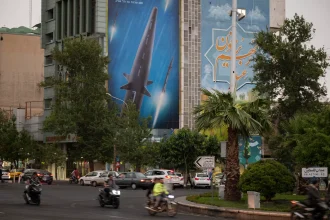Japanese authorities have opened two independent investigations into the fatal plane crash that occurred on Tuesday, which claimed five lives when a passenger jet crashed into a Coast Guard turboprop at a Tokyo airport and caught fire.
Investigating the cause of the collision at Haneda airport, transport safety officials are concentrating on the correspondence between air traffic control officials and the two aircraft. The AP reports that in the meantime, police launched a different investigation into potential professional negligence.
At Tokyo’s Haneda airport, Japan Airlines Flight 516, an Airbus A350-900, touched down on a runway and collided with Coast Guard Flight MA-722, a Bombardier Dash-8.
The jet caught fire, spewing out gray smoke before coming to a halt. Using emergency chutes, all 367 passengers and 12 crew members miraculously could leave without incident.
Still, out of the six crew members on board the Dash 8, five perished in the collision. Despite escaping the wreckage, the captain suffered severe injuries.
Based on transcripts of conversations with the control tower, Japanese authorities said on Wednesday that the smaller plane was not cleared for takeoff. Still, the passenger jet was allowed to land, according to Reuters.
According to the transcripts, the Coast Guard aircraft was instructed to taxi to a holding area close to the runway while the Japan Airlines plane was allowed to land. From Shin Chitose Airport, which is close to Sapporo, the Airbus had taken off for Haneda.

No indication could be found in those transcripts that the Coast Guard aircraft had been permitted to take off, according to a representative of Japan’s civil aviation bureau.
A Coast Guard official told Reuters that the Coast Guard plane’s captain acknowledged that there was no indication in the transcripts that he had been permitted to enter the runway, but he did say he had done so after getting permission.
To determine how the two planes simultaneously ended up on the runway, safety investigators intend to speak with the pilots, officials from both sides and air traffic control officials, according to the Japan Transport Safety Board (JTSB).
The A350 and Boeing 787 aircraft, which have carbon-composite fiber fuselages instead of traditional aluminum skins, are expected to use the fire as a major test case.
“To my knowledge, this is the most devastating composite-airplane fire. However, the fuselage kept everyone safe from an extremely terrible fire for a while, allowing all of the passengers to escape, according to safety consultant John Cox.
Airbus announced in a statement that it sent a group of forensic specialists to Japan to help law enforcement with their inquiries. It stated that the precise reason for the collision is still unknown.
According to the airline manufacturer, the passenger jet involved in the accident, MSN 538, was powered by Rolls-Royce Trent XWB engines and delivered to Japan Airlines from the production line on November 10, 2021.














